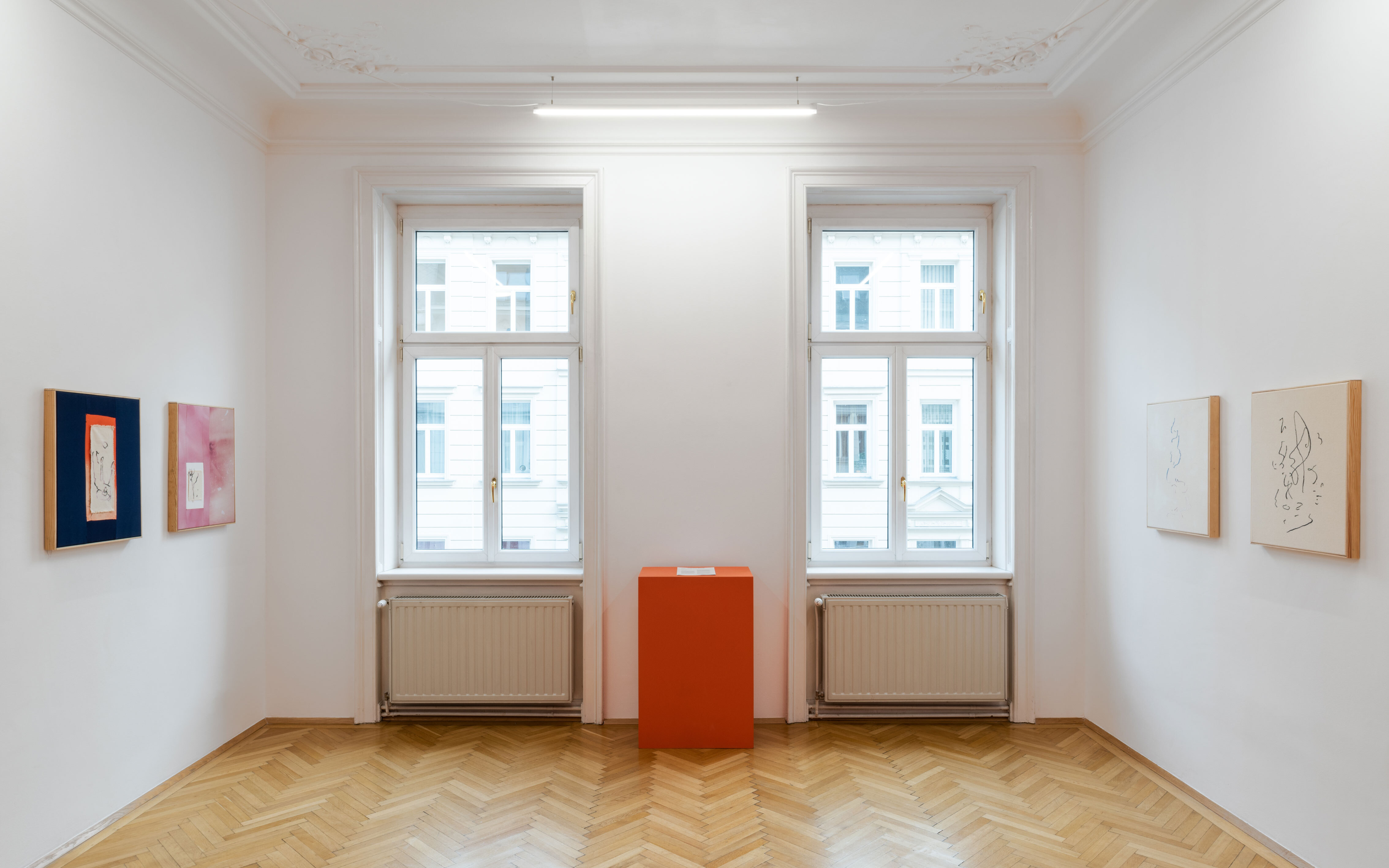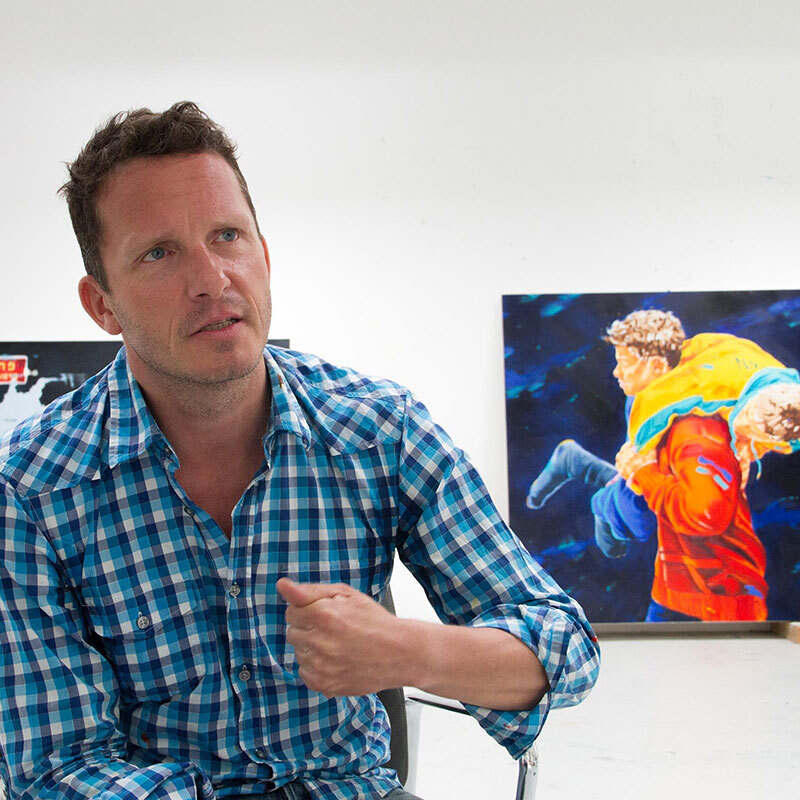Manuel Tainha
»PATHWAYS«
25 March – 19 June, 2021
In one of his memoirs, Sergei Eisenstein, a Soviet film director, film theorist and pioneer in the practice of montage, recalls a childhood event which truly left a mark on him. It took place in his parents' drawing room: as they eagerly waited for some card game to start, Mr. Afrosimov, a regular guest of the sumptuous dinner parties occasionally hosted there, grabbed a piece of white chalk and patiently started drawing shapes on a dark blue tablecloth. He was drawing animals, wild animals, outlined in white upon the cloth. “Mr. Afrosimov… was drawing for me!” Eisenstein tells.1 He was drawing their contour without shading them. It was as though these lines, “before the eyes of the delighted beholder,” were moving, drawing a “magical path”: a path left and outlined upon the table in which the line took the form of a “track left by the movement.” Many years later, Eisenstein writes, the recollection of this event still brought along the clarity of the “sense of line as dynamic movement; a process, a path”; a sense which would later prove to be a “permanent passion” of the author's—one fulfilled both in the potential sketching of an actor's steps throughout some film's mise-en-scène, and through the several drawings Eisenstein executed during his lifetime. But this childhood event also brings to the author's mind something that springs from the established comparison and relationship, in terms of purity, rhythm, and freedom, between two activities Eisenstein practised and became fascinated with from an early age: drawing and dance.
Indeed, it was in a drawing room he took his first dance class, so tells us Eisenstein. Well, the close relationship between these two activities—one he much naturally acknowledges—proceeds from the fact that, as he writes, “drawing and dancing are branches of the same tree, of course.” These are activities rooted in the same force, the same pulsating energy; “they are just two varieties of the same impulse.” It was through the necessary improvisation in the act of dancing, in opposition to the demanding discipline and strict rules of dance, that Eisenstein recognised the freedom of the movement of the line in drawing, through the “free run of the hand,” amidst the spontaneity and fluidity of the gestures. Likewise, his drawings would later be written about with regard to his fingers' trajectory upon the paper, “as if they were dancing”; and his line, he tells us, “was seen as the trace of a dance.”
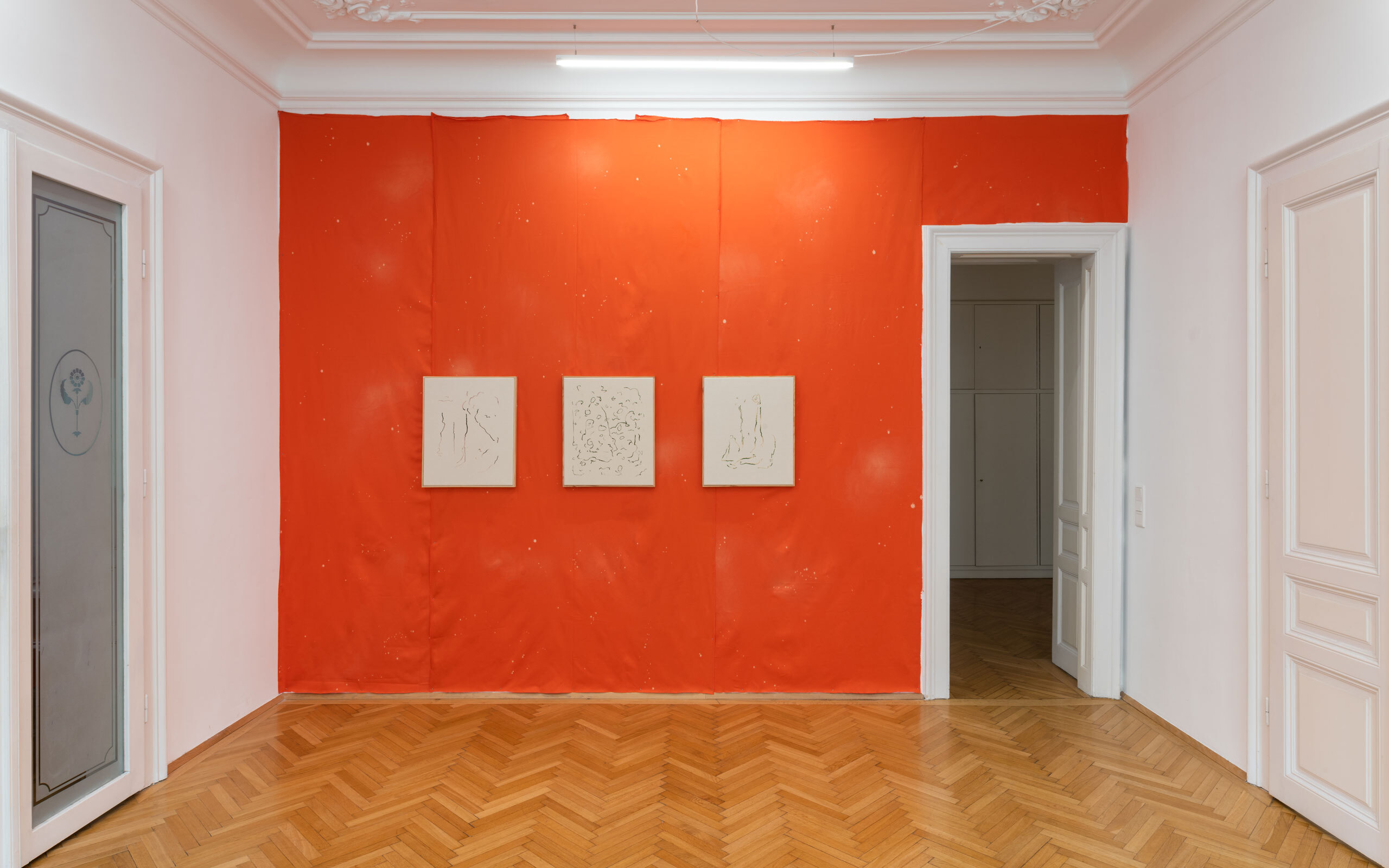
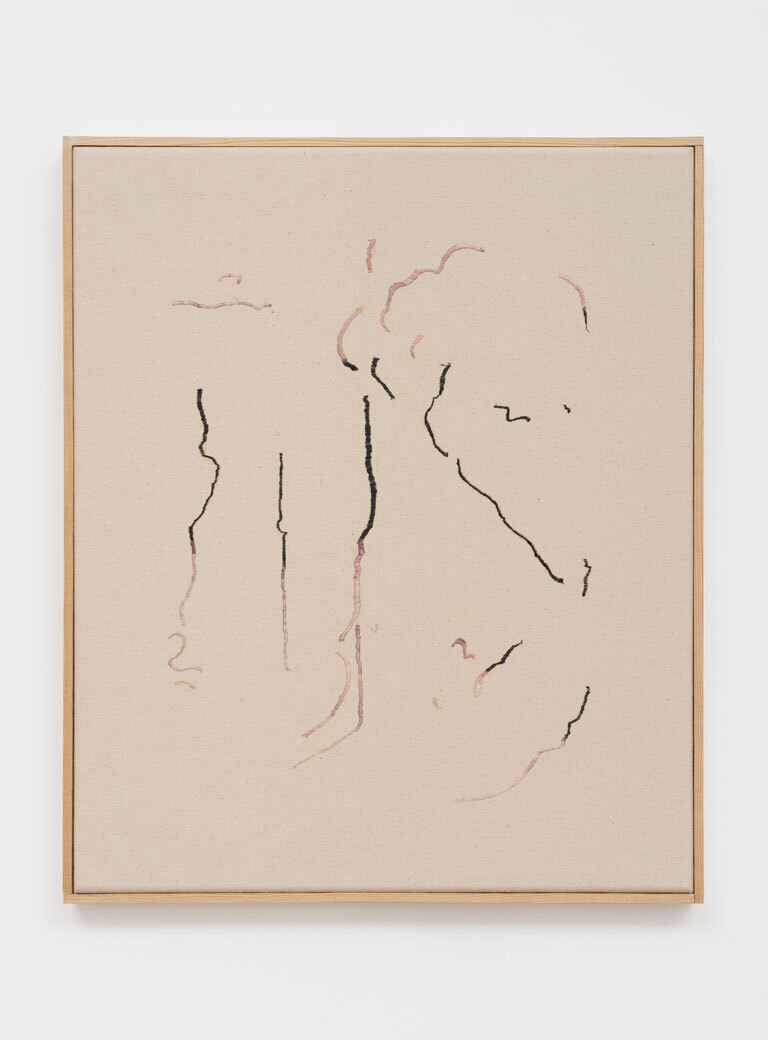
Manuel Tainha, LOG ON, 2021
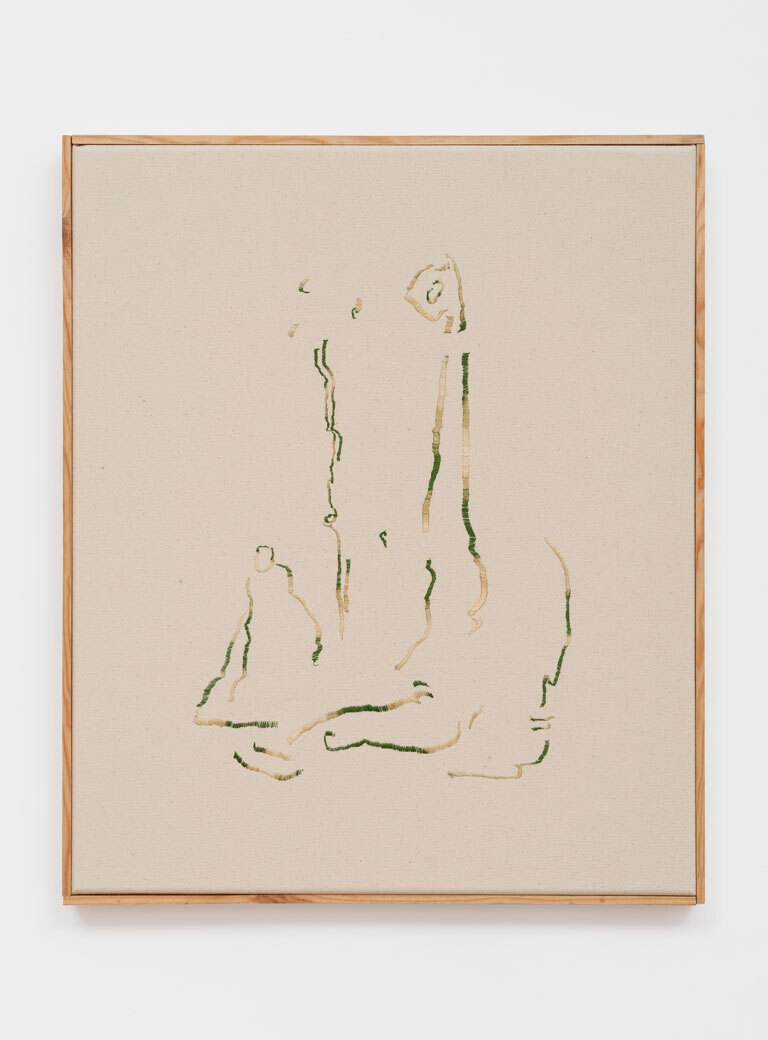
Manuel Tainha, B27, 2021
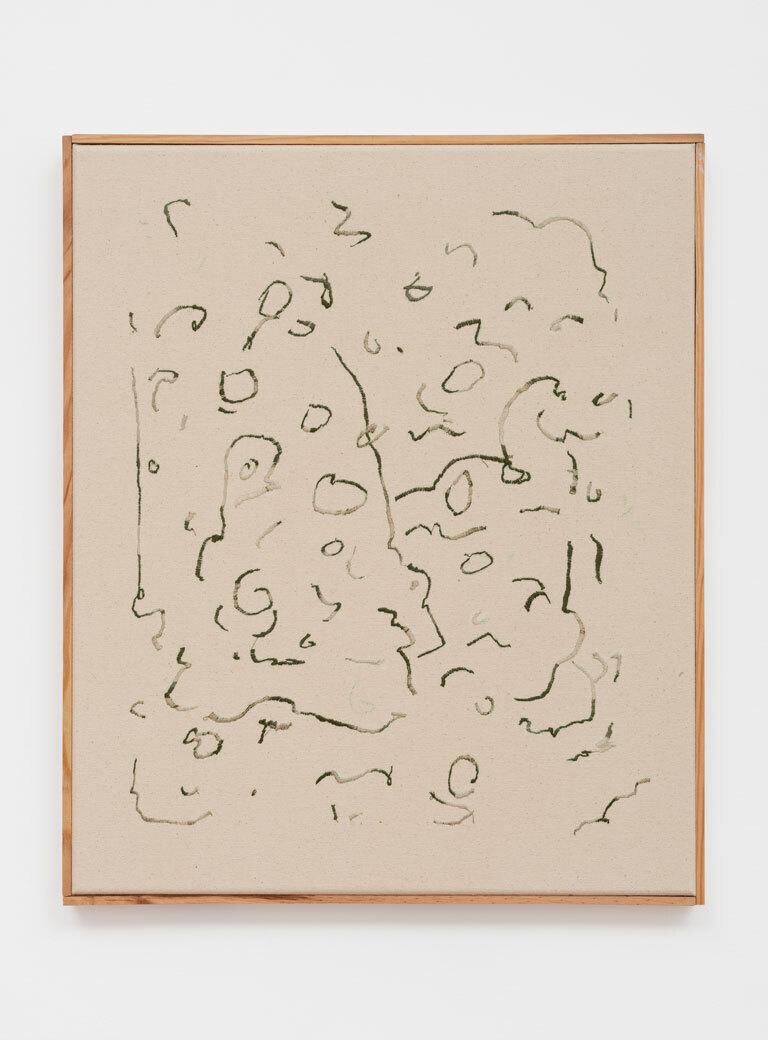
Manuel Tainha, GOPAK, 2021
Created among patches of dyed cloths and embroidered lines, Manuel Tainha's paintings make us recognise that primary, natural, organic impulse Eisenstein refers to: an impulse which triggers the spontaneous, nimble, free movement of those who draw that which becomes the memory of a gesture's graciousness.
Embroidered on cloth, the drawn lines—sometimes thinner, more subtle, sometimes denser and thicker—emerge as though they were tracks, magical paths, left by some dance's, some choreography's movements; lines which dance vibrantly, continuous lines which are interrupted, and which are later controlled once more, rendered moderate, undulating, balanced; lines as traces of a brief, suspended, fixed, almost imperceptible movement, like that of a shooting star as it incandescently rips through the dark sky, or that of a flat stone as it is thrown across still water; or perhaps that of a bird gliding through the clouds as it dive-bombs to the sea, or even, as Valéry observed, the swift movement of marine animals hastily jumping and diving in the open sea, “livelier than the waves amid which they glisten and change color in the sun.”
Sure enough, French poet, essayist, and philosopher Paul Valéry asks: “Might we not call this a dance?”2 This movement which is dance, for, as the French poet Stéphane Mallarmé had said, dance is suspension; it is lightness; dance is “wings, it is a question of the birds and of departures into neverland, of returningsvibrating like an arrow.”3
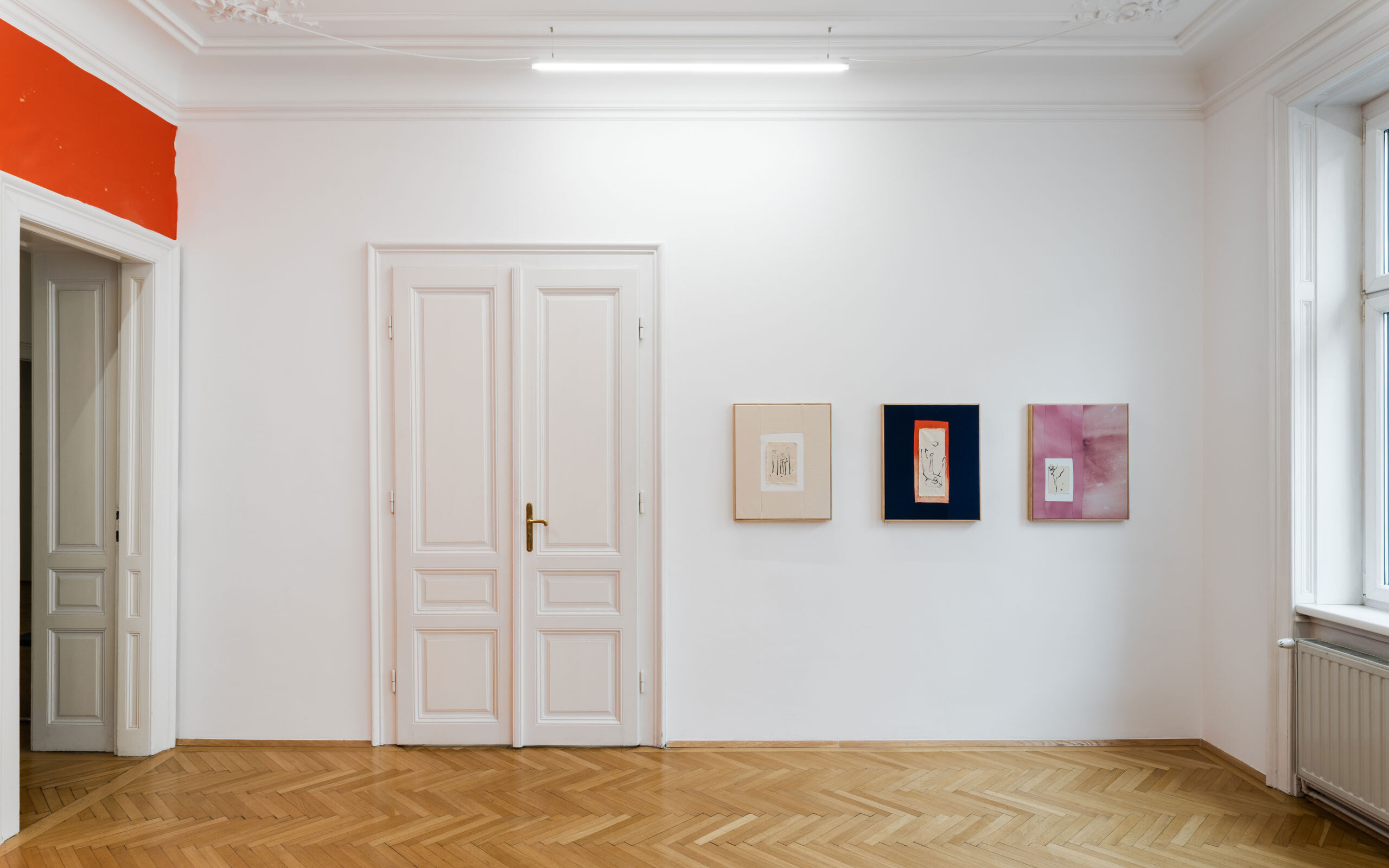
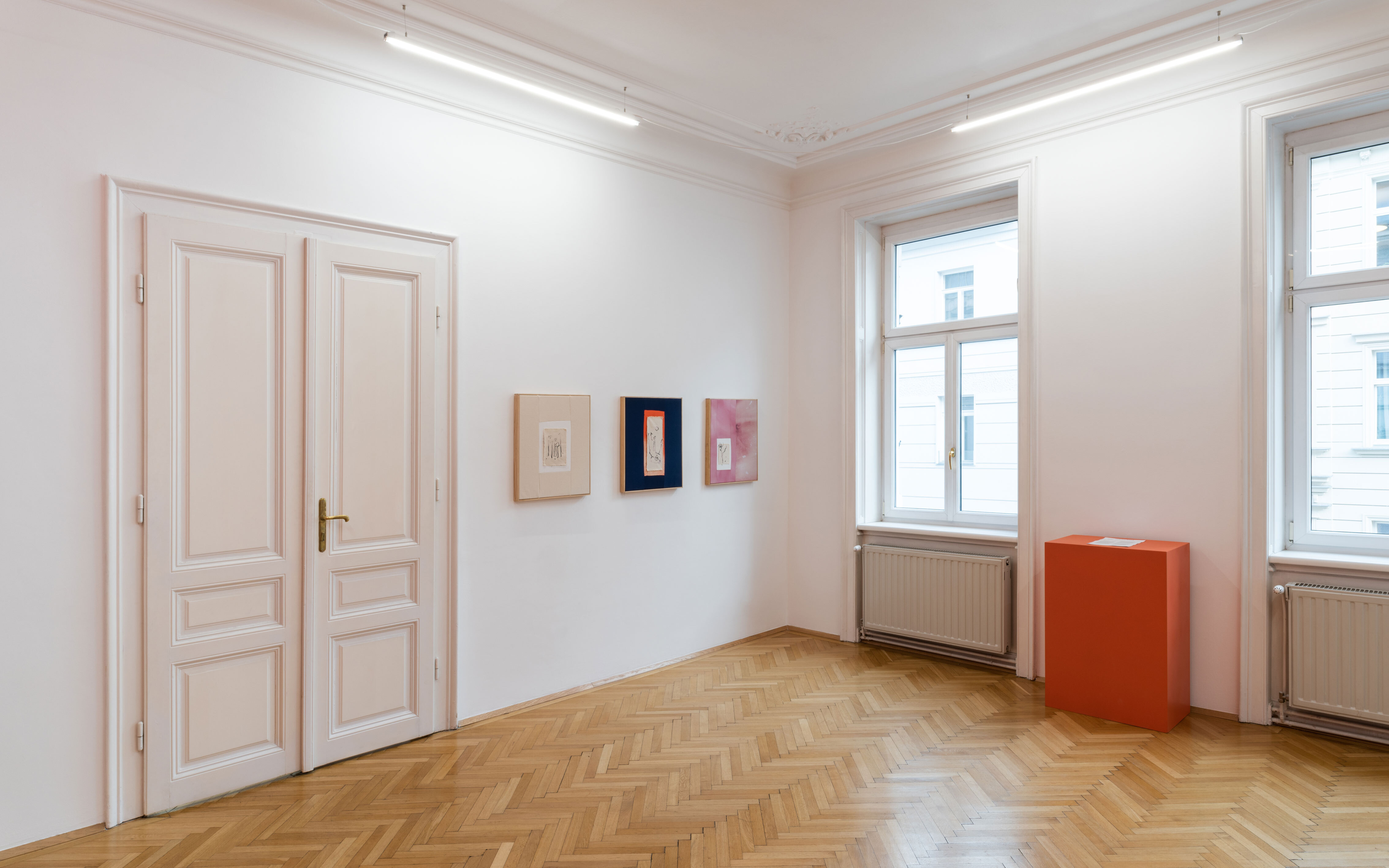
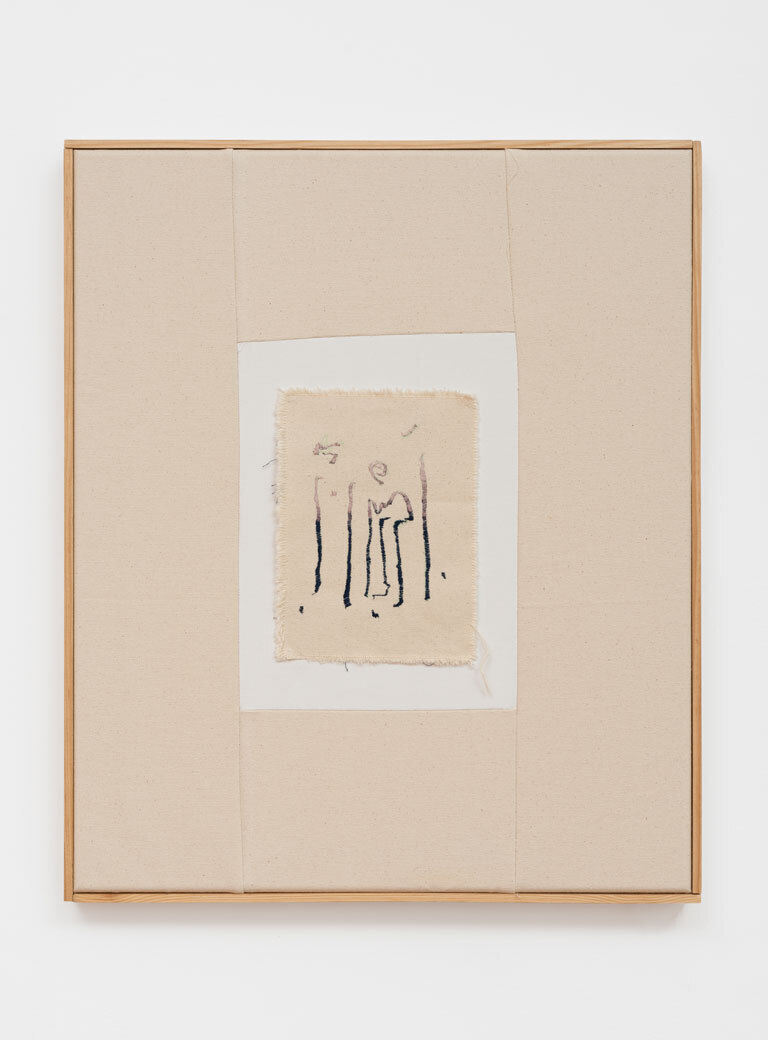
Manuel Tainha, ATL, 2021
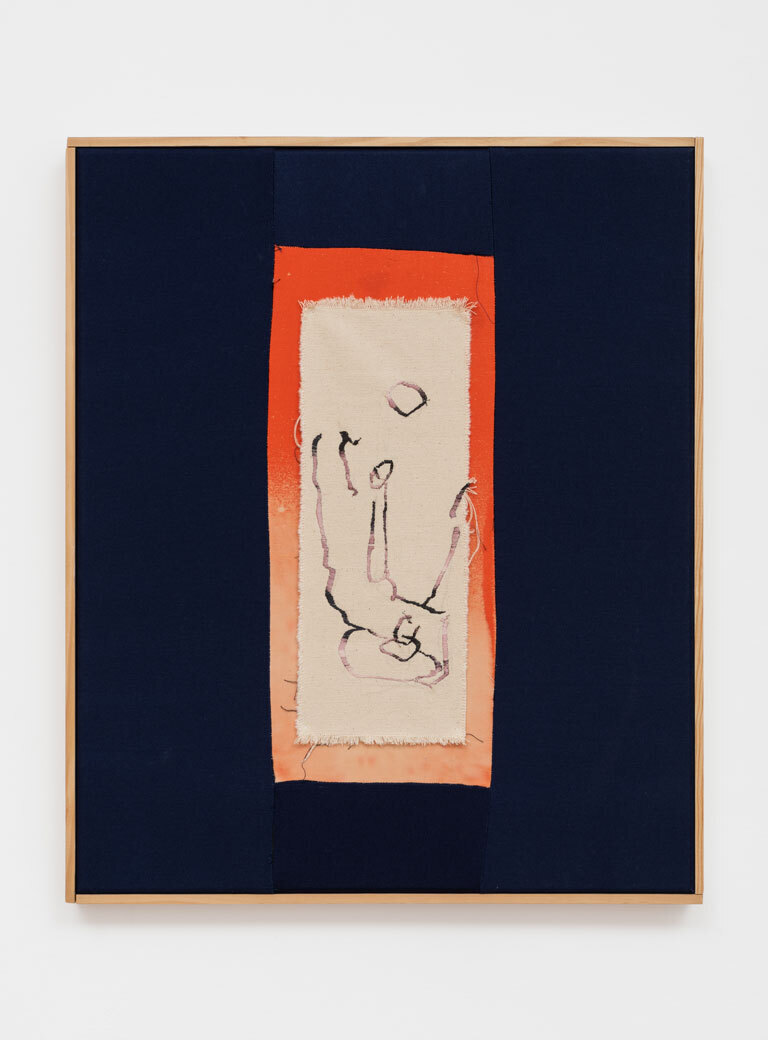
Manuel Tainha, BOUND, 2021
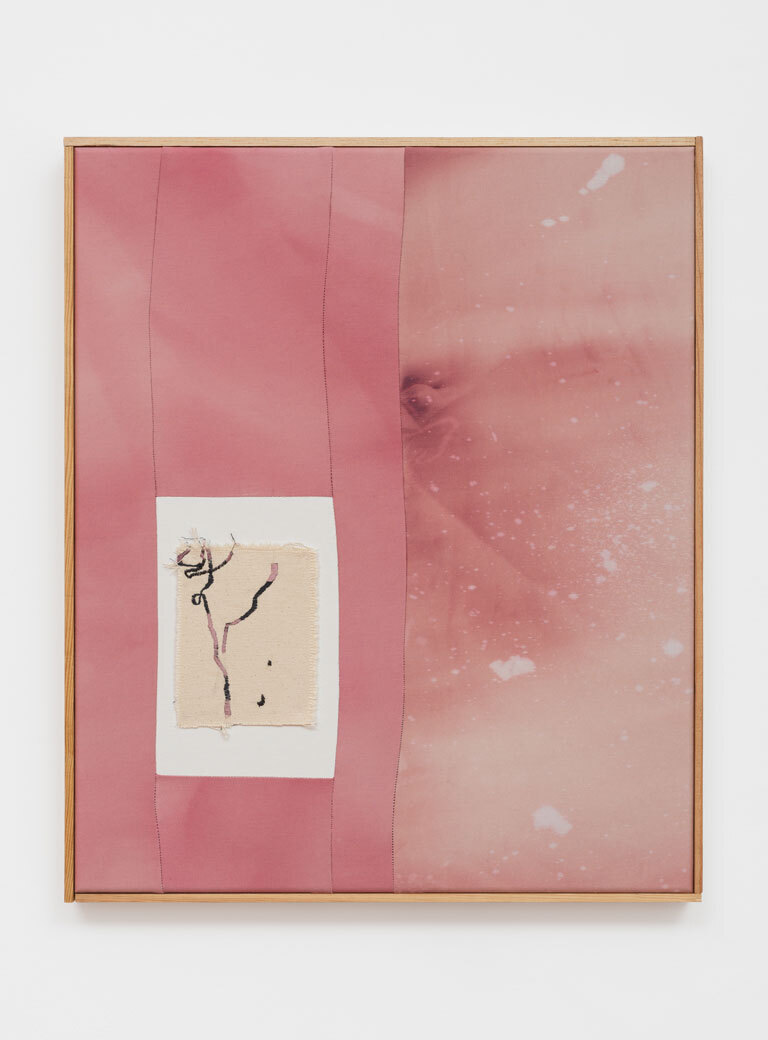
Manuel Tainha, TARRAXA, 2021
The lines by Manuel Tainha are, too, ways of departure and return, paths trod and untrod, extensions and interruptions peculiar to those who handle and embroider the cloth. Firstly, a line in chalk; then, a line embroidered to the rhythm of the sewing machine. But this very mechanism is here subverted, disturbed, for the artist disarranges its action and rejects its direction, automatism, and acceleration, inducing pauses and discontinuities, accumulating lines, breaking needles, decalibrating and calibrating the machine over and over. He tries to overcome its rigidity, the hostility contained in the rule, the method, attempting to find anew the graciousness and frankness of an originally spontaneous, improvised gesture—a quest for “the free run of a line” via “the free run of the hand,” as Eisenstein wrote, thus transposing a “conflict between the free course of the all’improviso, flowing line of drawing or the free run of dance, subject only to the laws of the inner pulse of the organic rhythm of purpose (on one hand), and the restrictions and blind-spots of the canon and rigid formula (on the other).”4
There are lines on raw cloths, and lines on stained cloths, the latter framed and sewn to one another. There are also cloths upon other cloths; four lonesome stiches unite them, for which reason the delicate, light, embroidered cloth seems to rest upon the surface, upon the background colour, upon very small dotted stains, as though it defied gravity. Lines which draw the paths of those who dance and lines upon skies of constellations. It was precisely upon a blue, star-dotted corps de ballet backdrop that Mallarmé saw a possible “ideal dance of the constellations.”5
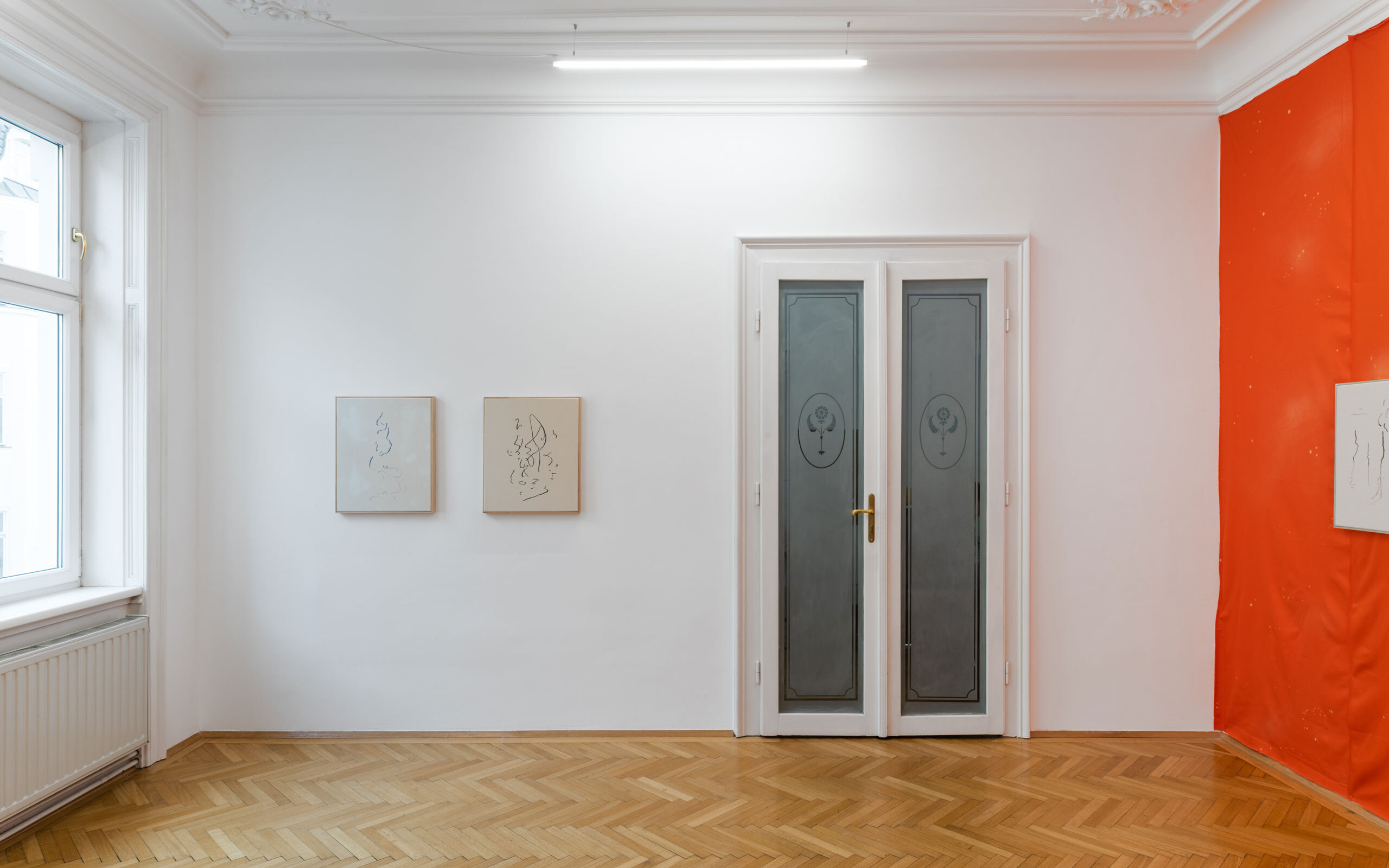
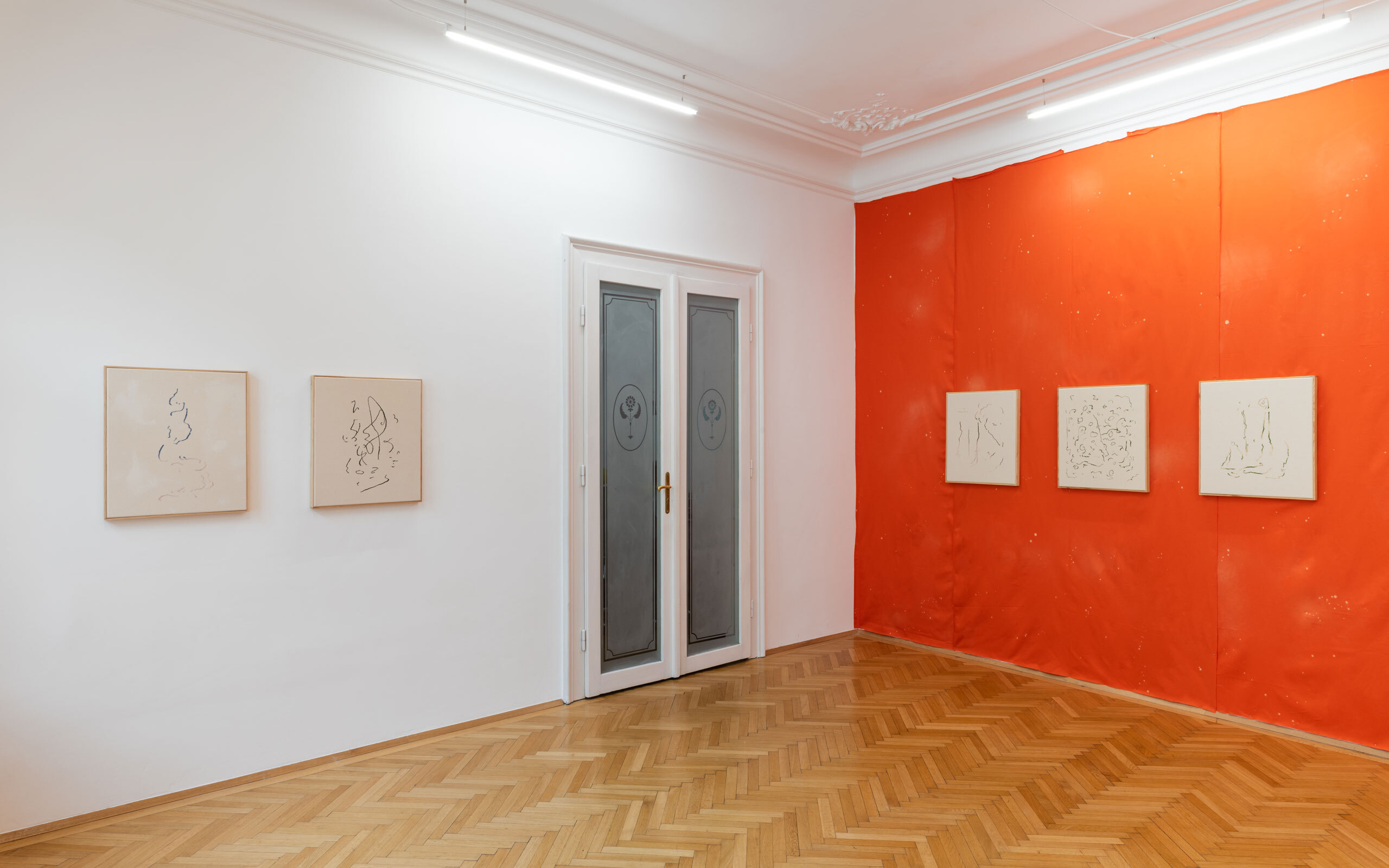
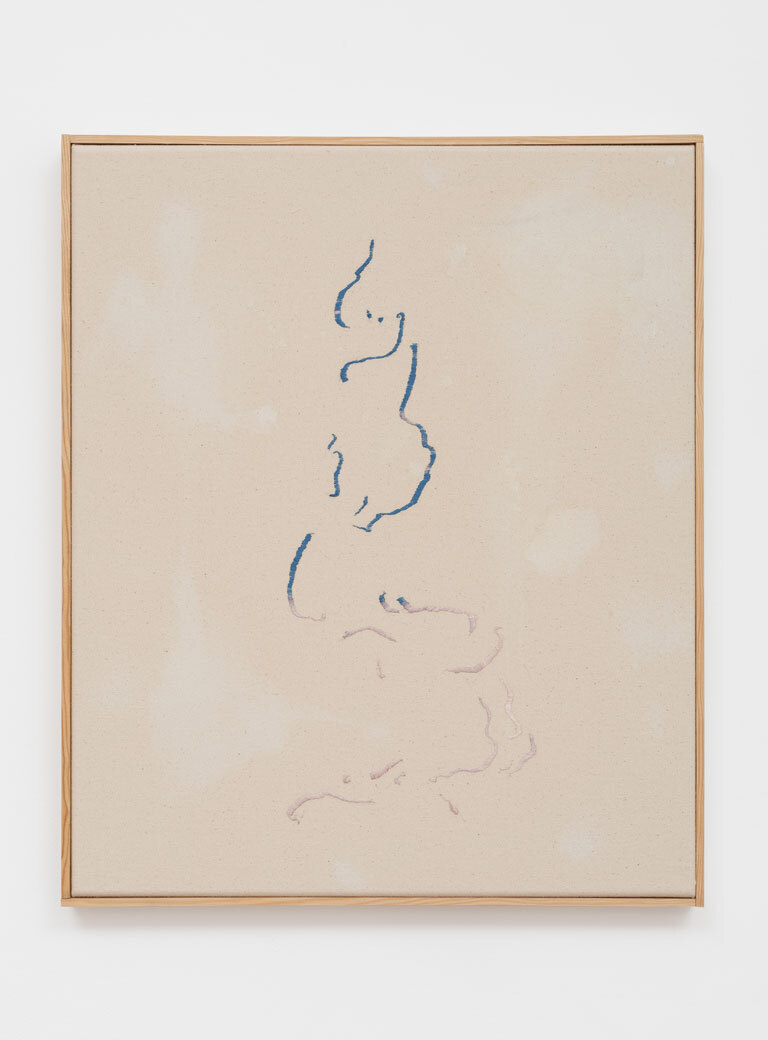
Manuel Tainha, HEART HAND WRIST, 2021
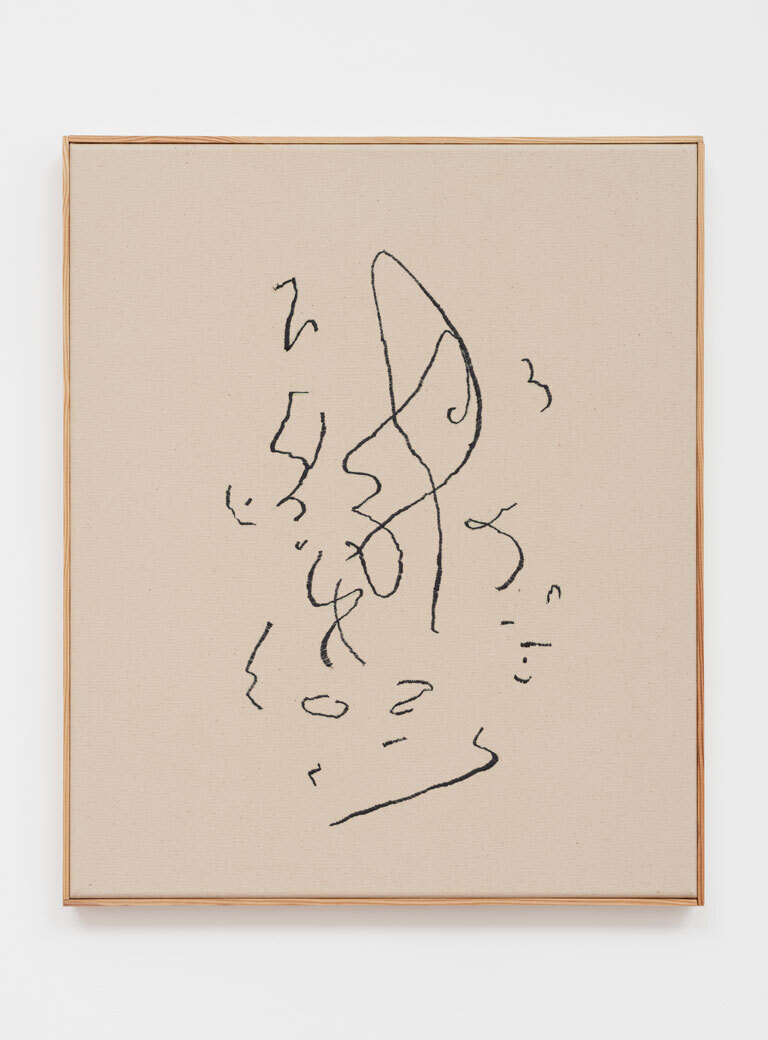
Manuel Tainha, SOUP, 2021
Alongside the dancer, says Valéry, the poet, the musician, and the artist daringly share a driving action that underlies that which is eventually rendered tangible as a work of art: an overtly lively, hectic, productive action which overlaps the normative cadence of the practical world, going beyond its borders, its boundaries, its impositions. As you observe a musician, “watch his hands,” Valéry suggests; “concentrate on the hands”— “Are they not dancers who have also been subjected for years to severe discipline, to endless exercises?”
As you observe a painter, is he not “a pure executant whose successive operations tend to take place in commensurable lapses of time, that is to say, with a certain rhythm”? In regard to the poet, “what is a metaphor if not a kind of pirouette performed by an idea, enabling us to assemble its diverse names or images?” Ultimately, all artistic activity can be considered a dance, says Valéry: a dance which is an interior pulsion brought into the world, from which movements are transformed, metamorphosed, rendered suspended, and gestures are drawn, turned into memory, rendered permanent.
Art concerns life, as Valéry clearly shows us, because these movements, movements of both thought and body—these suspended gestures, preserved and prolonged in time, retrieved from time; these dance moves, pirouettes, spins, flights, and open arms in the form of magical paths—are “quite simply a poetry that encompasses the action of the living creatures in its entirety.” And we, before these paths, joyfully indulge in and yield to the measured rhythm, to such an extent that we actually get the feeling that we ourselves, credulous ones, are dancing as well.6
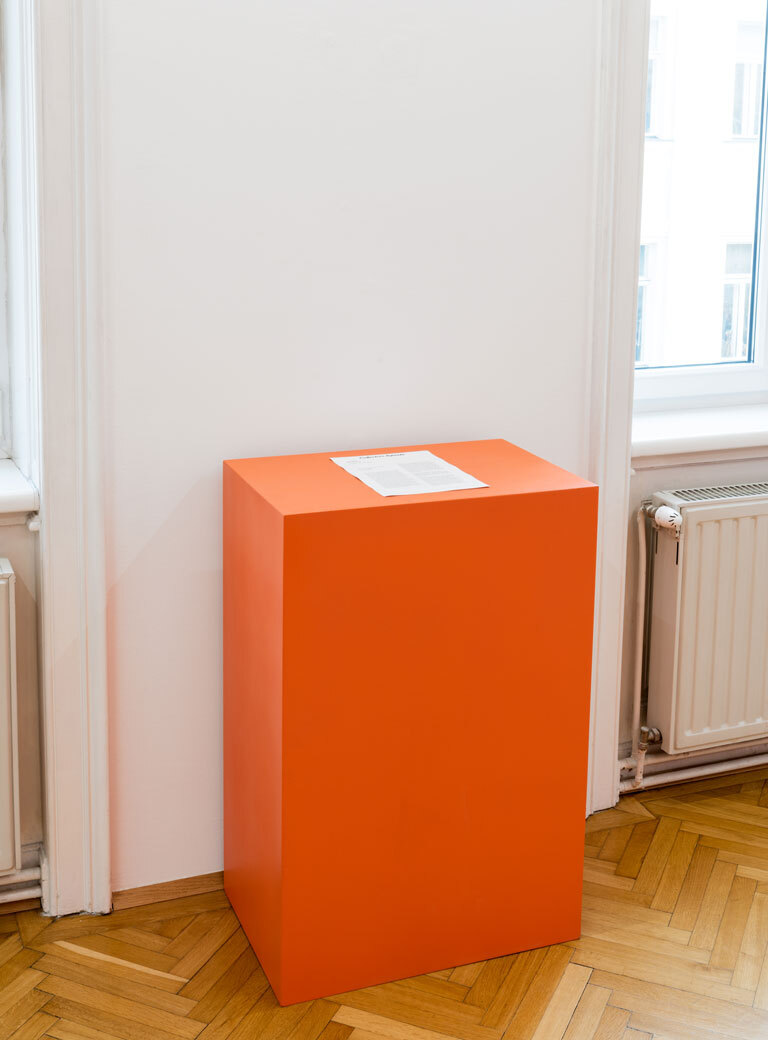
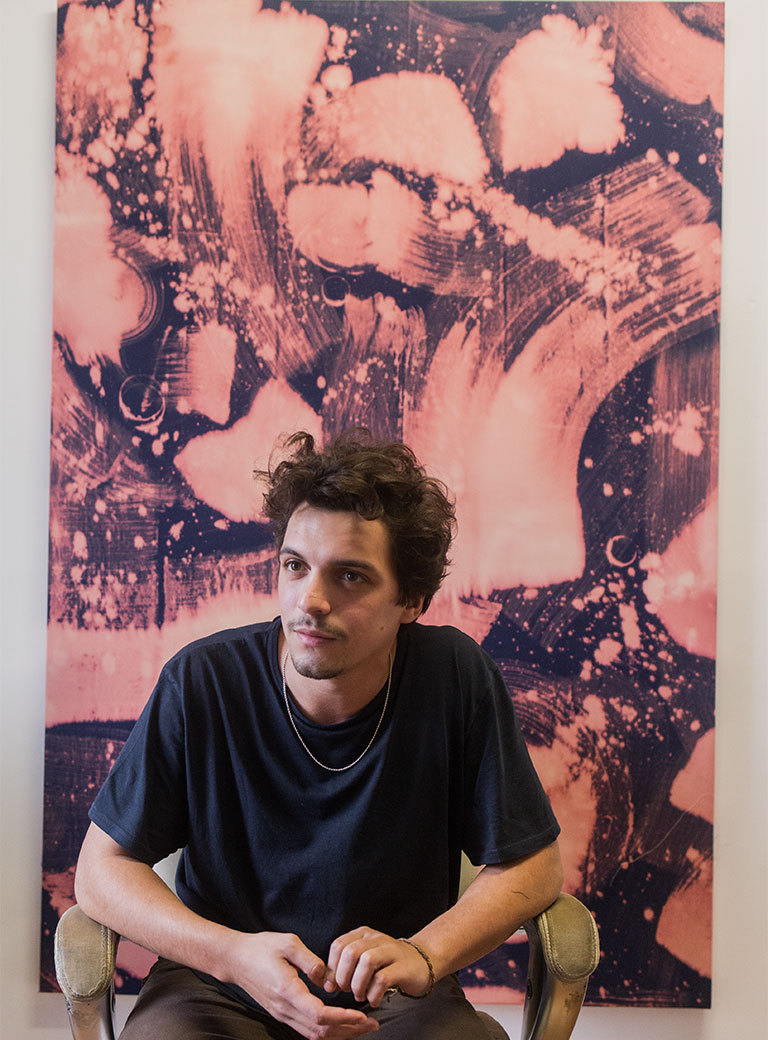
Text: Filipa Correia de Sousa
Photos: Simon Veres, Fábio Cunha (portrait photo)
1 Sergei Eisenstein, “How I Learned to Draw (A Chapter about My Dancing Lessons)”, in Beyond the Stars: The memoirs of Sergei Eisenstein, Vol. IV
2 Paul Valéry, “Philosophy of the Dance”, Salmagundi, nº 33/34, Dance (Spring-Summer, 1976)
3 Stéphane Mallarmé, “Ballets”, Performing Arts Journal, Vol. 15, nº 1 (January, 1993).
4 Sergei Eisenstein, op. cit.
5 Stéphane Mallarmé, op.cit.
6 Cf. Paul Valéry, op. cit.
Links:


